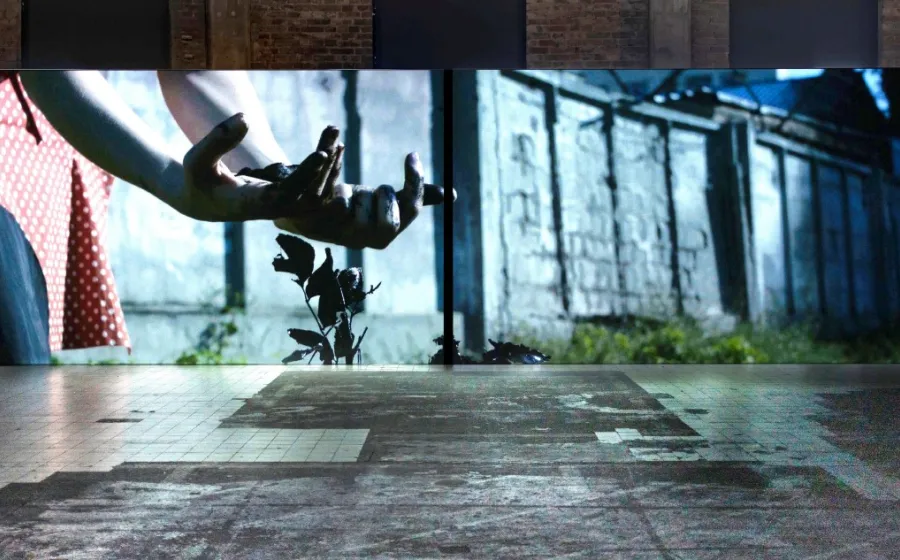Exhibition by the artist collective Metahaven: Collapse of the Weave Function
Date
Venue
Format
Institution
Programme
Collapse of the Weave Function fits within one of the core themes of LAB 4 —“soft” science fiction— understood as poetic interventions in the technological fault lines of the present. The project will take shape through four works: the audiovisual installation Hometown and the textile pieces Collapse of the Weave Function, After Attention (working title), and Centerless, all commissioned by Medialab Matadero specifically for this occasion.
Filmed in Kyiv and Beirut in 2017, Hometown (2018) constructs an imaginary city through two places that never meet, yet become a unified landscape across the film’s two screens. Ghina and Lera, the protagonists, are doubles of the same character. While they remain apart, speaking in turns, the film opens up a visual and linguistic space that is more poetic than narrative. The images act as resonances—indirect, suggestive, and polysemic. What should feel ordinary becomes unsettling. Meanwhile, the web and digital layers of reality—abstract and intangible—are rendered in physical terms: cables, heat, and ground. The film’s lyrical tone, inspired by absurdist Russian children’s poetry, addresses conflicting experiences of disorientation and belonging. In the years since its making, Hometown has gained renewed relevance, especially in light of Russia’s illegal invasion of Ukraine and Israel’s military incursions into Lebanon. As the artists note, “the film remains a solemn prayer for the need of a place we can call home, rooted in the shared materiality of life, the stubborn presence of place, the capacity to imagine.”
The Jacquard textile piece Collapse of the Weave Function (2025) is a meditation on Schrödinger’s Cat, the famous thought experiment from quantum mechanics involving a cat in a box. In the original version, the cat is both alive and dead (in a state of superposition) until observed. In this version, the cat is both awake and asleep, though the viewer will never know in which state they will find it—and thus, into which state its “wave function” (or, in this case, weave function, an untranslatable play on wave and weave) will collapse. The textile work takes the form of an ultra-long, ultra-thin woven film strip that traverses the entire exhibition space in an installation that is at once fragile and monumental.
After Attention (2025) consists of two Jacquard tapestries exploring how art, rational intelligence, and ethics interact in moments of urgency—when the distance between causes and effects collapses. Complementing the installation Hometown, the work poses the question: “What is marginalized by our attention?” The well-known 1949 statement by theorist Theodor Adorno—“to write poetry after Auschwitz is barbaric”—stemmed from a vision in which art and barbarism stood in dialectical opposition, separated by a before and after. Yet, from the perspective of the contemporary attention economy and its abuse and instrumentalization within communication systems, art and barbarism continually overlap. They exist as layers of the same timeline.
Metahaven’s proposal concludes with Centerless (2025), a large-scale textile work made from humble colored plastic bags, assembled and embroidered with patterns inspired by the behavior of bird flocks, forming a unity without a center.

